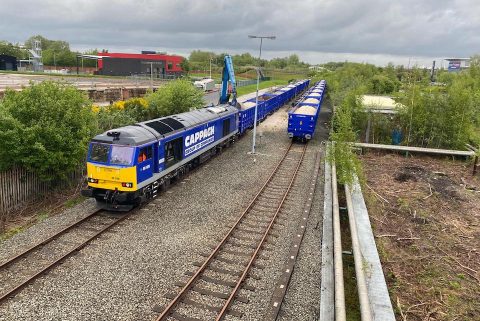Rail freight terminal decision ‘precedent’ for council support

Approval for a rail freight terminal in north London has been welcomed by freight lobbyists. The Campaign for Better Transport (CBRT) says new adjacent housing needs rail to bring in the necessary building materials.
The CBRT said Barnet Council’s decision to give the go-ahead for the terminal on existing rail land at Cricklewood had set a ‘clear precedent’ for local authorities in supporting local rail freight facilities based on the wider socio-economic effects.
Construction
Without the terminal, the building nearby of between 7,000 and 8,000 new apartments, which are part of a larger 4.5 million pounds regeneration project, ‘would not be viable’, said the CBRT. All of the construction materials would otherwise have to be delivered by road HGVs, bringing with them the usual congestion, pollution and safety issues. The original planning application was made by DB Cargo UK, and later amended to a joint operation with the council for an ‘open access’ facility, enabling other freight operators to use the terminal.
Almost half of London’s building aggregates are now moved by rail, and each train into the new Cricklewood terminal will remove as many as 85 HGVs from London’s road network, and carry enough materials to build the equivalent of 30 houses. The facility has been designed to the latest standards in terms of noise reduction, fencing, lighting and screening, with adaptations to the local road network, to minimise adverse impacts on its neighbours.
Mitigation
Philippa Edmunds, Freight on Rail Manager for the CBRT, said: “This planning consent sets a crucial precedent which demonstrates that local authorities should support local rail freight terminals based on the wider national and sub-regional socio-economic benefits of rail freight as long as there are adequate mitigation measures to handle local impacts.
“Cricklewood rail lands represent one of the few remaining suitable sites with good rail and road connections, where aggregates can be brought into the capital for use in construction projects. The terminal is compliant with national, regional and local spatial planning and transport policy; these operational railway lands have been safeguarded in the Barnet local plans for this purpose for many years.”





